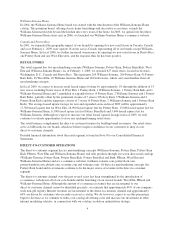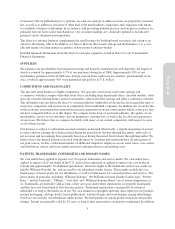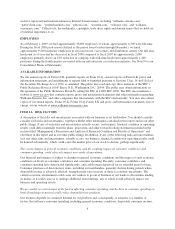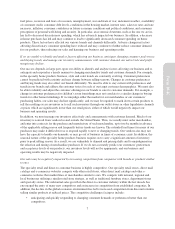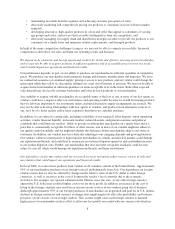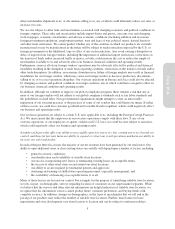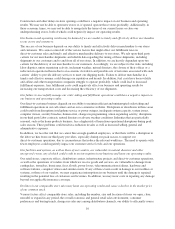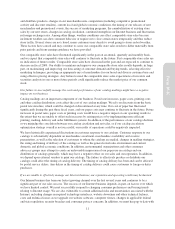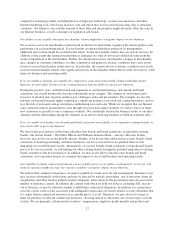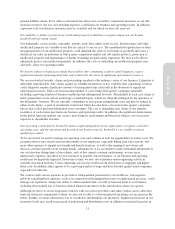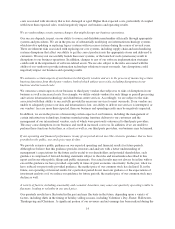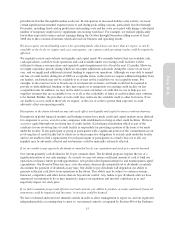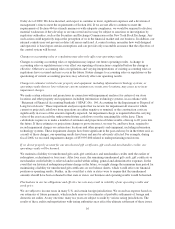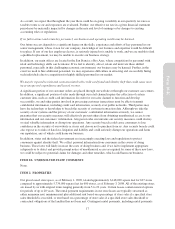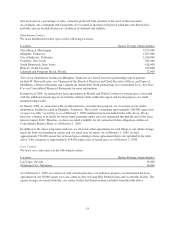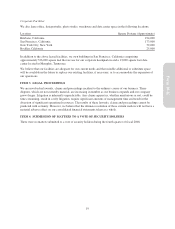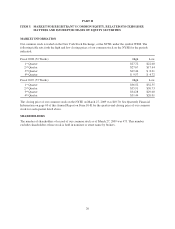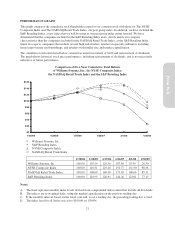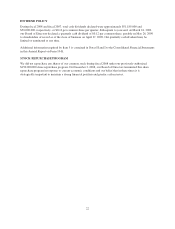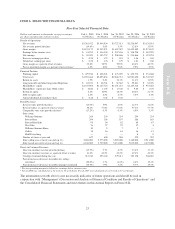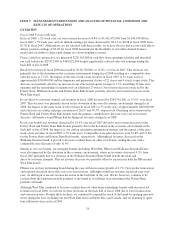Pottery Barn 2008 Annual Report Download - page 26
Download and view the complete annual report
Please find page 26 of the 2008 Pottery Barn annual report below. You can navigate through the pages in the report by either clicking on the pages listed below, or by using the keyword search tool below to find specific information within the annual report.costs associated with inventory that is lost, damaged or aged. Higher than expected costs, particularly if coupled
with lower than expected sales, would negatively impact our business and operating results.
We are undertaking certain systems changes that might disrupt our business operations.
Our success depends, in part, on our ability to source and distribute merchandise efficiently through appropriate
systems and procedures. We are in the process of substantially modifying our information technology systems
which involve updating or replacing legacy systems with successor systems during the course of several years.
There are inherent risks associated with replacing our core systems, including supply chain and merchandising
systems disruptions that affect our ability to get the correct products into the appropriate stores and delivered to
customers. We may not successfully launch these new systems, or the launch of such systems may result in
disruptions to our business operations. In addition, changes to any of our software implementation strategies
could result in the impairment of software-related assets. We are also subject to the risks associated with the
ability of our vendors to provide information technology solutions to meet our needs. Any disruptions could
negatively impact our business and operating results.
We outsource certain aspects of our business to third party vendors and are in the process of insourcing certain
business functions from third party vendors, both of which subject us to risks, including disruptions in our
business and increased costs.
We outsource certain aspects of our business to third party vendors that subject us to risks of disruptions in our
business as well as increased costs. For example, we utilize outside vendors for such things as payroll processing
and various information technology and distribution center services. Accordingly, we are subject to the risks
associated with their ability to successfully provide the necessary services to meet our needs. If our vendors are
unable to adequately protect our data and information is lost, our ability to deliver our services is interrupted, or
our vendors’ fees are more than expected, then our business and operating results may be negatively impacted.
In addition, we are in the process of insourcing certain aspects of our business, including the management of
certain infrastructure technology, furniture manufacturing, furniture delivery to our customers and the
management of our international vendors, each of which were previously outsourced to third party providers.
This may cause disruptions in our business and result in increased cost to us. In addition, if we are unable to
perform these functions better than, or at least as well as, our third party providers, our business may be harmed.
If our operating and financial performance in any given period do not meet the extensive guidance that we have
provided to the public, our stock price may decline.
We provide extensive public guidance on our expected operating and financial results for future periods.
Although we believe that this guidance provides investors and analysts with a better understanding of
management’s expectations for the future and is useful to our shareholders and potential shareholders, such
guidance is comprised of forward-looking statements subject to the risks and uncertainties described in this
report and in our other public filings and public statements. Our actual results may not always be in line with or
exceed the guidance we have provided, especially in times of great economic uncertainty. In the past, when we
have reduced our previously provided guidance, the market price of our common stock has declined. If, in the
future, our operating or financial results for a particular period do not meet our guidance or the expectations of
investment analysts or if we reduce our guidance for future periods, the market price of our common stock may
decline as well.
A variety of factors, including seasonality and economic downturn, may cause our quarterly operating results to
fluctuate, leading to volatility in our stock price.
Our quarterly results have fluctuated in the past and may fluctuate in the future, depending upon a variety of
factors, including shifts in the timing of holiday selling seasons, including Valentine’s Day, Easter, Halloween,
Thanksgiving and Christmas. A significant portion of our revenues and net earnings has been realized during the
14


